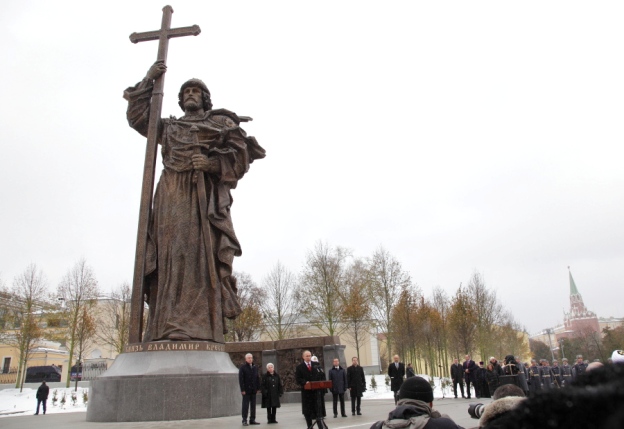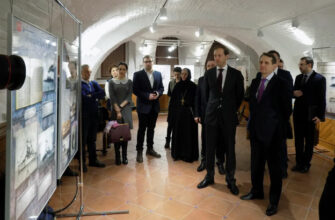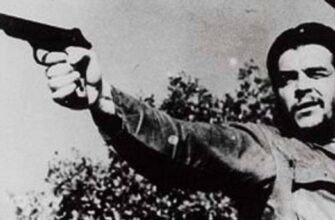The memory of St. Prince Vladimir (ruled Kiev Rus in 980-1015) was immortalized on 04 Nov 2016 by powerful monument on the Borovitskaya square in Moscow. The author of the monument is a people’s artist of Russia sculptor Salavat Shcherbakov. In the ceremony of its opening, stressing the significance of the event, was seen the President of the Russian Federation Vladimir Putin.
The author of the monument was selected in competition in spring 2016. The contract for its production (cost about 150 million rubles) got the architectural Bureau Ai-architects.
The scale of the monument corresponds to the value of the outstanding ruler in Russian history.
During the reign of St. Vladimir the old Russian state was formed and the process of merging of Eastern Slavic lands around Kiev was ended, in meaning of forming the system of subordination under princely power. Princely power began to dominate in the state, to manage it, to judge, to collect tribute (taxes) and to protect its trade and borders. The defeat of the enemy of Russia and its trade named Pecheneg has earned him a grateful memory in the annals and folk tales, where he is called Vladimir the Red Sun.
First of all, St. Vladimir baptized Rus in the Christian faith, and starting from the XI century he is revered by the Orthodox Church. The day of the Church commemoration of the Prince on July 15 was established in 1240 in time of Alexander Nevsky.
With the adoption of Christianity in Russia were stopped blood sacrifices, including the killing of wives, concubines and slaves at the burial of the Lord entered edenorte, stopped destroyed the property of the deceased, strengthened the power and became more active exchange with neighbors, especially the Greeks (Byzantines) who brought to Russia a lot of knowledge: spiritual, cultural, artistic, administrative and political.
Faith had the first spiritual significance, which was definite across all social and family relations. A common religion helped to unite people within the state. Even before the adoption of Christianity vol. Vladimir was known as a religious reformer. In 981, the year he set the single six pagan cult of the pagan gods led by the Thunderer Perun. This reform failed and led kN. Vladimir to choose the best of the religions of their neighbors.
“The tale of bygone years” tells us that in search of faith Vladimir called preachers of Christianity, Islam and Judaism. Islam was not suit the ruler because of the refusal of the drink, Judaism – for scattering of Jews around the world, and the Christianity of Rome’s was unacceptable for errors in matters of faith. This is the way how the selection of the most beautiful in the cult and true Faith, professed by the powerful and stable then the Byzantine Empire is explained (in secular explanation).
It is important to note that in the tenth century, Russian princes often borrowed ideas and terms from the neighboring Nations, if they had to taste and place. So, in relation to St. Vladimir, Metropolitan Hilarion, in the eleventh century, uses the title of the Khazar Kagan.
Also one faith contributed to increase of political and trade ties. One of the main partners of Russia – Byzantium, for example, forbided items from pagan Russia declared “unclean”.
Christianity had already been spread in Russia in princely family by the time of his adoption by Prince Vladimir.
So, 100 years before the official adoption of the Faith, in the second third of the ninth century, part of the squad and of the people of Russia have become Christians. Patriarch of Constantinople, Phocas was sent here the Byzantine Hierarch. In the 70-ies of IX century the same thing was done by the Patriarch Ignatius. Part of the Russian squad was baptized around 860 year by the Byzantine Patriarch Ignatius during the reign of the Emperor Basil I.
Grandma of the Prince Princess Olga was a Christian (according to different sources she had adopted it in 944 or 955 g). After the adoption of Christianity St. Olga became a Christian sermon, she destroyed pagan shrines and built Christian churches, including St. Sophia Cathedral of Kiev. The invitation of Christian governors from Rome in 962 prompted the pagan priests to make a “campaign” to remove the ruler from power and to replace her of the throne in favor of her son Svyatoslav who had not been interested in the Christian faith. The older brother of St. Vladimir Prince Yaropolk also “loved the Christians”.
What prompted the St. Vladimir to adopt Christianity on a personal level – it is an open question. Here, apparently, coincided a lot of things. And also the desire to marry the Byzantine Princess Anna, daughter of the Porphyrogenitus Roman and the sister of the Byzantine Emperor Basil II Bulgariboicy. Anna became an associate of her husband in the Christianization of Rus. But, first of all, judging by the behaviour change and the reign of the Prince, it was the Belief, because together with Christianity mercy entered the reign of St. kN. Vladimir.
Sources:
Pravoslavie.ru, Russian Ministry of Culture, History of Russia in IX-XVIII centuries. / Moryakov V.I. – Moscow, Philologue. «Slovo», Eksmo, 2004. Klyuchevsky V. O. About Russian history. – M., Prosveschenie, 1993. Ancient Rus in the light of foreign sources. / under the editorship of E. A. Melnikova. Moscow, Logos, 2003




